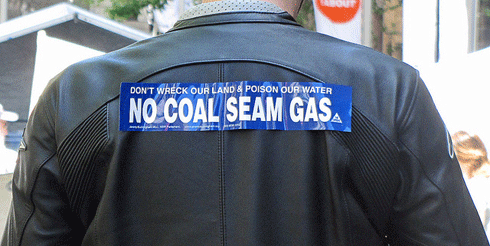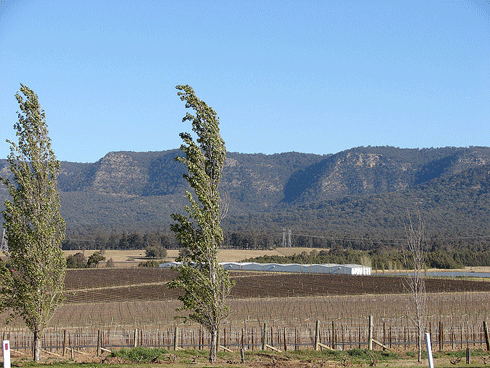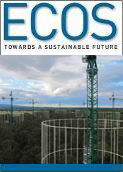
|
Published: 29 October 2012
Secure social licence calls for 'big picture' thinking
‘Social licence to operate’ has become central to the current debate between the mining and extractive industries and the community over activities such as coal seam gas (CSG) extraction in Queensland. But what does the term actually mean, and how is such a licence secured?
According to one definition, an operation is said to have a social licence when it achieves continued acceptance or approval from the local community and other stakeholders affecting its profitability.
In other words, without a social licence, it is difficult for a mine to operate effectively or profitably.
‘It’s no longer enough for a company to have a legal licence to operate. They also need a social one,’ says Dr Kieren Moffat, a social psychologist from CSIRO’s Minerals Down Under Flagship.
‘Unlike a government-issued paper licence [to mine], a social licence to operate is an intangible social contract between an extractive industry, its stakeholders and the community in which it operates.’
One barrier to achieving this has been the definition – or lack thereof – of the term as used by gas developers and mining companies.
‘[CSIRO] analysed the way members of the International Council for Mining and Metals (ICMM) used the term in formal sustainability communications, and the way the term is used by industry professionals in their work,’ says Dr Moffat.
‘We are also examining what drives acceptance and approval to operate among stakeholders, particularly local communities affected by mining in Australia.
‘We found that even those companies with mature policies around sustainability struggle to manage this relationship. It’s hard because mining has a large footprint that puts pressure on the local environment.
‘There is also real variability across the extractive industries, which comprise a small number of large players with multiple operations. A large company doesn’t always do the same thing at all of its sites; the experience and the relationship varies with context.’
In September 2012, the Committee for the Economic Development of Australia (CEDA) released Australia's Unconventional Energy Options. The report calls for governments to help find the balance between meeting community expectations and allowing industry to progress unconventional gas developments that could provide a lower emission source for electricity generation than traditional supplies such as coal.
In releasing the report, CEDA Chief Executive, Professor the Hon Stephen Martin, noted, ‘In Queensland we are already seeing significant developments progressed. However, the full potential of unconventional energy resources across Australia can only be realised if [the industry] continues to have a social licence to operate’. Failing to do so, he added, may cost billions of dollars and thousands of jobs.

|
|
CSG protestor in NSW: The values held by different parts of the community about mining often conflict with the value the mining company puts on maximising shareholder value. Social scientists say the industry needs to ‘look beyond the business case as the only legitimate basis for decision-making’. Credit: Newtown graffiti under Creative Commons Attribution 2.0 Generic licence
|
According to Dr Leeora Black, founder and managing director of the Australian Centre for Corporate Social Responsibility (ACCSR), the concept of the social licence ‘is in danger of being treated as reputation, because companies’ ideas around preserving their legitimacy are too shallow’.
‘Companies talk about it as if they have it already, about preserving it,’ says Dr Black. ‘They don’t understand the nature of a social contract, which has shifted.
‘We define a social licence as “the level of acceptance or approval that stakeholders and communities extend to a project, site, enterprise or company”. Acceptance is at the lower end of the scale, approval at the higher.
‘At the highest level, the community regards the mining [and extractive] enterprises as an essential or valued part of the community, and advocates for its continuity. It can be seen at play in terms like “our town” or “our company”. Usually this is earned only after a couple of generations.
‘It’s easy to see when the social licence is lost – there are blockades, demonstrations and strikes, but it is much harder to distinguish the middle ground and it is easy for companies to confuse acceptance and approval.’
One of the great challenges to acquiring and maintaining their social licence, says Dr Black, is for modern mining companies to recognise the different benefits and impacts felt by different stakeholders.
‘Because a social licence is intangible, different stakeholders have different perceptions of it.
‘The benefits of mining are mostly long-term, widespread and geographically dispersed, whereas the negatives tend to be concentrated and local. The local community may not regard the balance sheet as well-balanced.’
Dr Roger Jones, Professorial Research Fellow at Victoria University’s Centre for Strategic Economic Studies, says the debate over CSG is seeing traditionally conservative groups like the farming community vigorously opposing unconventional gas operations.
At heart, he believes, is the issue of perceived risk versus calculated risk.
‘With many calculations of environmental risks, the numbers are often highly uncertain. It is especially difficult when you can say there is a risk but it’s difficult to quantify accurately.
‘Calculated risk combines scientific and other values to estimate the likelihood of risk and assess the costs and benefits of various options for risk management. Perceived risk is how risk and risk management options are seen by an observer.
‘The value that a farmer puts on their livelihood is often very different to how a mining company will maximise shareholder value. For perceived risk, emotional, rather than analytic, decision-making is likely to dominate.
‘There is also the social amplification of risk – that is, the risks to things we hold in high value are amplified socially by fears over their loss.’
Avoiding the risk of engagement may be contributing to the loss of social licences by mining and extractive companies.
In a recently published article ‘Social licence and mining: A critical perspective’, John Owen and Deanna Kemp from the Centre for Social Responsibility in Mining at the University of Queensland’s Sustainable Minerals Institute argue companies may fear that ‘engaging expectations only increases them’.
‘[This] in turn increases the risk of exceeding what is reasonable or indeed possible for a mining company to “manage”, [driving] what can only be considered to be corporate “avoidance behaviour”, where comprehensive and sustained dialogue about community expectations is avoided in order to minimise the risk of expectation spiralling out of control.’
The researchers say the challenge for the industry is to ‘articulate an agenda that balances its own commercial needs with broader expectations about contribution to development’.
‘This involves looking beyond the business case as the only legitimate basis for decision-making.’
Measuring social impacts and returns on investment is amenable to social science research methodologies such as surveys, says Dr Black.
‘Companies can report this in the same way as other information, such as Environmental Impact Statements, but to date only one – the NSW Minerals Council (NSWMC) report into the Upper Hunter Mining dialogue – has done it,’ says Dr Black.
In 2010, ACCSR was engaged by the NSWMC to conduct a survey to understand community concerns regarding the cumulative impacts of mining in the Upper Hunter Valley. The report was published on the NSWMC’s website.
‘Companies can report if they are inclined, but disclosure is not mandatory, so it is regarded by most organizations as an internal management matter,’ Dr Black continues.
‘Publicising information is a good foundation for dialogue. There is no substitute for deep ongoing engagement.’
Professor Jones agrees. ‘The best way forward is for the CSG industry to monitor [impacts] as it goes and establish contingency plans, but also to regard assets like groundwater as being common – even if they’re privately licensed,’ he says.
‘Making that data publicly available will allow people to make their own assessments of calculated versus perceived risk.
‘More transparency about calculations will also put all sides in a better position when the issue is debated. If information is hidden, the debate doesn’t go away, it is just conducted with less data.’

|
|
Fields of dormant vines in the Hunter Valley, a focus of many recent protests by farmers against mining: the NSW Minerals Council has established an Upper Hunter Mining Dialogue to better gauge community expectations. Credit: mdavidford under Creative Commons Attribution-NonCommercial-ShareAlike 2.0 Generic licence
|
Dr Moffat adds that building a trusting relationship requires the company to show that it is interested in what the community thinks, is flexible in how it deals with issues, and sensitive to the needs and expectations of the community.
‘This approach creates a productive relationship, and tells the community they can trust that the company will do what they say, and respect the views of the community.’
Dr Moffat’s team is currently working with industry partners to create a social impact framework around critical impact areas, bringing together surveys from stakeholders, qualitative interviews and water monitoring data. They are also modelling the experience of impact and how that relates to the acceptance and approval of an operation.
‘We want to benchmark social performance, and build datasets that explain these relationships at a regional scale.
‘We hope this will help guide local council strategy development and state policy around mining development, and help companies to engage communities on the issues that matter.’
Leeora Black goes further. ‘Expectations for delivering local benefit are now bigger and more complex, and companies need to think creatively about how they are going to create a good social contract with their community.
‘The relationship with the community needs to add social, cultural and environmental value,’ she says. ‘This goes beyond job creation – some parts of the Upper Hunter have strong economic activity, and more jobs available than can be filled.
‘But more jobs may not be seen as a benefit because they need to be filled by new people, which puts a strain on existing infrastructure.’ They may also be filled by existing people, taking labour away from other industries.
‘You can’t secure a social licence to operate with a community investment plan or by throwing a barbeque. Instead, a mining company needs to work collaboratively with the local community to ensure they are better off.’
|
Vision 2040, a plan for Australia’s mineral future, is the product of a three-year collaboration between CSIRO and five Australian universities through the Mining Futures Collaboration Cluster. |
‘It lays out ideas about the steps that can move us in a more sustainable direction, so that the industry can achieve a net positive benefit,’ says Dr Moffat. ‘We need to have a more nuanced, mature conversation about how society wants to relate to mining and vice versa. If that conversation happens great things can be achieved.’ |
Vision 2040 recognises that appropriate technology choices that respond to a broader range of values and needs, including those of local communities, will be key to building a sustainable minerals industry. |
‘Social innovation will also be a point of difference between companies with those demonstrating a track record of building strong relationships with communities and stakeholders in a better position to lead the way in promoting a more efficient, sustainable industry globally, particularly in developing countries.’ |




